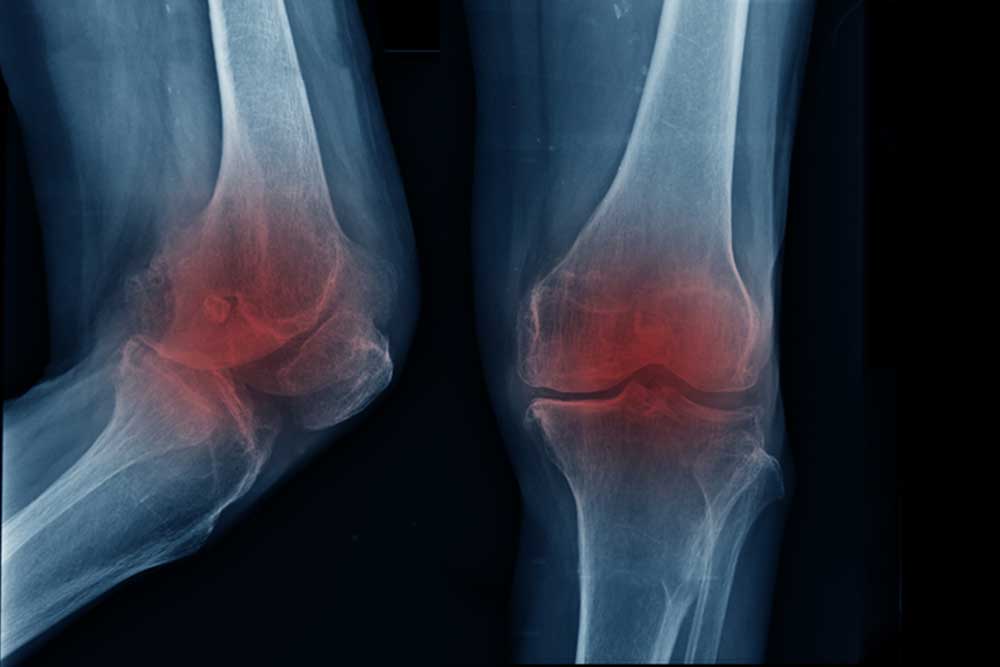Knee flexion deformity treatment in Türkiye
Knee flexion deformity is the inability to fully straighten or extend the knee, also known as flexion contracture. The normal active knee range of motion (AROM) is measured from 0° extension and 140° flexion. The degree is reduced in people with knee flexion deformity of one or both knees. It develops as a result of the failure of the knee flexors to lengthen along with the bones, especially when There is not enough physiotherapy to provide active and passive mobilization of the affected joint. This often requires extensive rehabilitation of the patient and the deformity is either temporary or permanent.

Pathological causes of knee flexion deformity:
Knee flexion deformity arises for various reasons and two types of knee contracture can be distinguished:
Contractures associated with joint destruction and stiffness, such as:
- Rheumatoid arthritis .
- Osteoporosis .
- Cerebral palsy or congenital malformation.
- Hip joint injuries.
- Ankle diseases.
- Other degenerative conditions.
- poliomyelitis.
Contracture is preserved with joint anatomy and movement:
- After knee operations (total arthroplasty).
- Tendon transfer.
- Post-fractures of the femur, tibia, patella, or the entire knee joint have hardened.
- scar tissue
Clinical presentation:
Patients walk with flexion contractures. This places increased stress on the quadriceps muscles and increases contact force at the patellofemoral joint and the patellofemoral joint when the flexion deformity is greater than 15 degrees of extensor lag. There is early deterioration of the joint, including cartilage erosion and meniscus injury, and Ligament strain and tightness associated with myofascial tightness, the major muscles around the hip and ankle joint such as the psoas, hamstrings, gastrocnemius, quadriceps muscles, adductors or hip abductors depending on whether there is a secondary deformity of either the genome or the genome and the patella alta.
Changes in walking:
- Reduce walking distance.
- Flexible position of the knee at the start of the standing phase and throughout the gait cycle and no heel strike the foot is flat on the ground when contraction of less than 15 degrees of extensor lag and toe when walking with contraction of more than 15 degrees of extensor lag as angle is reduced popliteal.
- Pushing the body forward with increased hip flexion in the swing phase.
- Progressive gait and lameness during walking shorten stride length.
- Other symptoms of flexion contractures are anterior knee pain, and compensatory movements such as hip flexion deformity with lumbar lordosis.
- Changes seen later are severe contracture of the knee, hip and patella alta. Knee contracture also significantly affects three-dimensional trunk movements while standing and level walking. This leads to imbalance in the spine. There may be compression from the common peroneal nerve, tibial nerve, and other contents. of the fossa due to constant pressure on the popliteal fossa.
Knee flexion contractures have many functional consequences such as weight-bearing activities and difficulties in bed or chair positioning. Ordinary daily activities become more difficult due to the need for more energy to perform them, which interferes with people’s personal and social lives.
Special tests
- Thomas Test .
- Tripod sign: hamstring contraction.
- Clarke’s test: Patellofemoral pain syndrome.
Physiotherapy programs for knee flexion deformity:
Different management programs are required depending on the aetiology and severity of the deformity. This includes treatment of knee flexion contractures, both non-surgical and surgical methods. Physiotherapy is necessary in both cases. Conservative treatments include physiotherapy, home exercise programs, and home mechanical therapy. These are used to treat and reduce the incidence of flexion contractures. Spasticity management is also necessary in some conditions such as cerebral palsy.
The main treatment aims to:
- Joint activation of the hamstrings and quadriceps muscle.
- Improve the strength of the eccentric shank.
- Improve the strength of the quadriceps concentric muscles.
- Move the kneecap.
- Moving the hip and ankle joint.
- Walking training.
- Back to normal life.
Physiotherapy may include manual stretching, prolonged stretching using a tilt table, prolonged stretching using a sandbag, weight placement over the distal femur and mechanical traction, passive range of motion exercises and joint mobilization. The effectiveness of treatment given to reduce flexion contractures is a function of applied torque, in addition. to the duration and frequency of treatment.
Medical management of knee flexion deformity
Focused therapies including physiotherapy and the use of dedicated knee devices to treat flexion contractures have been shown to be effective for patients who have failed standard conservative treatment for two months or more. Other treatment modalities include orthoses, casts, and braces. Some types of splits have been marketed as another method. For application of low tensile forces over long periods as it provides flexion resistance until the knee at rest is at maximum extension and as the resistance can be amplified. They are easy to apply, mobile and comfortable for patients.
And splints and orthotics can also be used to prevent deformities or maintain range of motion after stretching, but not to increase movement in most cases, and in more severe cases, it may be necessary to resort to surgical treatment such as soft tissue liberation, osteotomy (removal of part of the bone), Thigh shortening, hamstring lengthening, rectal transfer, and hamstring stretch help relieve overactive contractures, especially when they have a significant impact on walking. A rectal transfer may be indicated to reduce partial spasticity of the quadriceps muscles, especially in patients with cerebral palsy.
The medical staff of surgical teams, doctors and consultants in REHABTÜRK can provide the best treatment options and free consultations – by striving to keep abreast of the latest medical technologies and methods.

